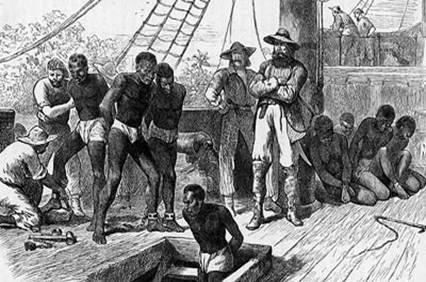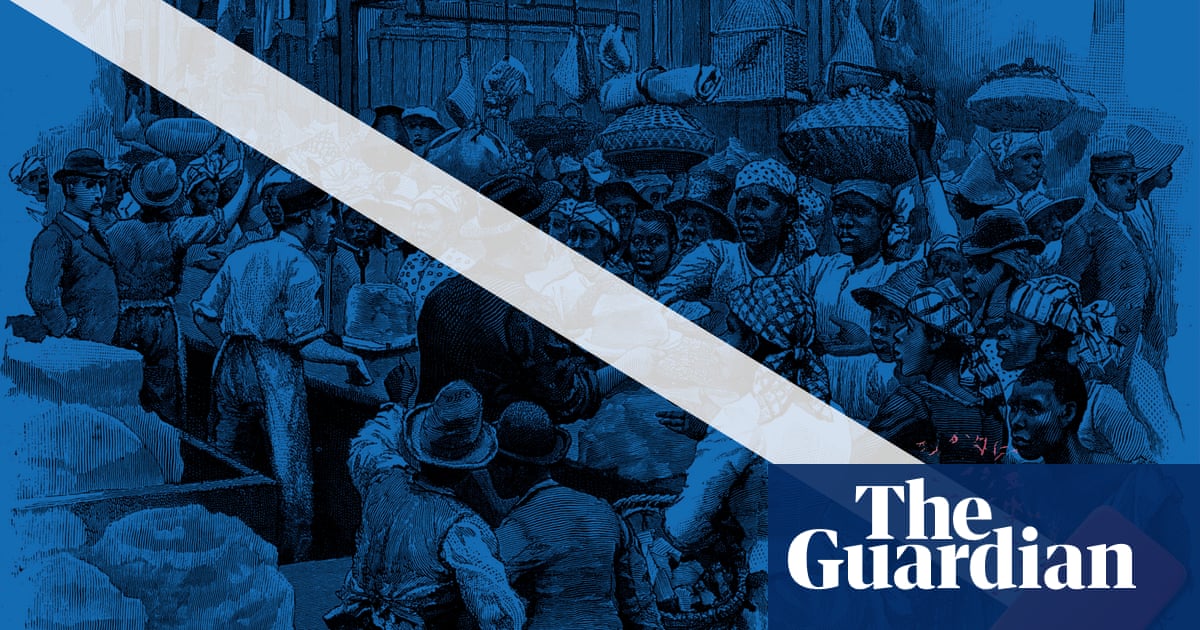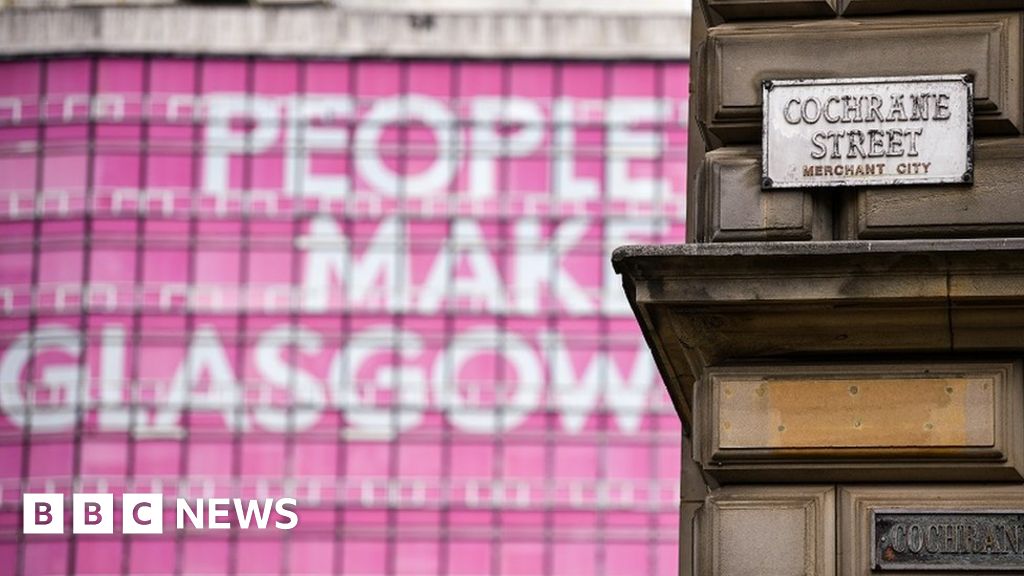5fish
Well-Known Member
- Joined
- Jul 28, 2019
- Messages
- 10,741
- Reaction score
- 4,570
The Scots had their own slave traders and plantation owners. .

 www.blackhistorymonth.org.uk
www.blackhistorymonth.org.uk
snip...
Even Robert Burns was considering a position as a book-keeper in a plantation before poetry revived his fortunes. In 1796, Scots owned nearly 30 per cent of the estates in Jamaica and by 1817, a staggering 32 per cent of the slaves. At any given time there were only about 70 or 80 slaves in Scotland but the country reaped the fruits of their labour in the colonies in the sugar, cotton and tobacco plantations. Many Scots masters were considered among the most brutal, with life expectancy on their plantations averaging a mere four years. Iain Whyte, author of Scotland and the Abolition of Slavery, insists we have at times ignored our guilty past.
Here another look...

 www.heraldscotland.com
www.heraldscotland.com
snip...
BUNCE Island, just off the Sierra Leone coast in west Africa, stands as a symbol of Scotland’s forgotten role in the Atlantic slave trade. Few people in Scotland know of the island, but no-one in Sierra Leone is unaware of it. It looms in the national consciousness. In the 18th and 19th century, tens of thousands of Africans – ancestors to the men and women who now live in the capital of Freetown – were held captive there in appalling conditions by Scottish slavers, before being shipped across the sea to plantations in the Caribbean and the Americas.
snip... golf, Four!
Bunce Island was turned into a little oasis of all things Scottish by slavers. It had its own castle. It was leased from the local king who once a year would turn up to collect his commission dressed in a kilt. Isatu Smith, the head of museums and relics in Sierra Leone, describes how the Scottish slavers even built their own golf course on the island and dressed their slave caddies in tartan so they could be reminded of home. "They were serving Scottish masters, so they had to look the part," Smith says. "We have a shared history. It is very important that the Scottish people know about this – whether they accept it or not is another question."
snip...
Scottish slavers ran Bunce Island from 1728 to 1807. They imported ice from Europe to keep food and wine cool in larders and enjoyed strolls in a private garden just metres away from pens where hundreds of human beings were kept like cattle before making the deadly Atlantic crossing. An estimated 50 per cent of slaves died on the journey. Eric Graham, a maritime historian, says that the dead were thrown overboard every morning. "All slave ships were followed by sharks," he says. "There was a dinner every day for the sharks
snip...
Scotland in the 18th century was built on slavery. The Merchant City in Glasgow would not exist without the money that poured into the coffers of tobacco lords and cotton kings – who now have city streets named after them. These men were made rich beyond their wildest dreams by the profits of slavery. For the human beings traded as slaves existence was a living hell. Rape, murder, torture, abuse, humiliation and degradation almost beyond imagination, were the stuff of daily life. At least 12 million slaves survived being shipped across the Atlantic – with around 3.5m bought and sold by British slavers, among whom Scots stood out as the most efficient and enterprising
Here is a link were the Scots hide their past in Guyana...

 www.theguardian.com
www.theguardian.com
snip...
The mangrove-fringed coast of Guyana, at the north-eastern tip of South America, does not immediately bring to mind the Highlands of Scotland, in the northernmost part of Great Britain. Guyana’s mudflats and silty brown coastal water have little in common with the lush green mountains and glens of the Highlands. If these landscapes share anything, it is their remoteness – one on the edge of a former empire burnished by the relentless equatorial sun and one on the edge of Europe whipped mercilessly by the Atlantic winds.
But look closer and the links are there: Alness, Ankerville, Belladrum, Borlum, Cromarty, Culcairn, Dingwall, Dunrobin, Fyrish, Glastullich, Inverness, Kintail, Kintyre, Rosehall, Tain, Tarlogie, a join-the-dots list of placenames (30 in all) south of Guyana’s capital Georgetown that hint of a hidden association with the Scottish Highlands some 5,000 miles away.

Scotland and Slavery
Scots proudly played their part in the abolition of the trade. But for a time we misted over our role as perpetrators of this barbarism. Many of Scotish
snip...
Even Robert Burns was considering a position as a book-keeper in a plantation before poetry revived his fortunes. In 1796, Scots owned nearly 30 per cent of the estates in Jamaica and by 1817, a staggering 32 per cent of the slaves. At any given time there were only about 70 or 80 slaves in Scotland but the country reaped the fruits of their labour in the colonies in the sugar, cotton and tobacco plantations. Many Scots masters were considered among the most brutal, with life expectancy on their plantations averaging a mere four years. Iain Whyte, author of Scotland and the Abolition of Slavery, insists we have at times ignored our guilty past.
Here another look...

How slavery made the modern Scotland
BUNCE Island, just off the Sierra Leone coast in west Africa, stands as a symbol of Scotland’s forgotten role in the Atlantic slave trade. Few…
 www.heraldscotland.com
www.heraldscotland.com
snip...
BUNCE Island, just off the Sierra Leone coast in west Africa, stands as a symbol of Scotland’s forgotten role in the Atlantic slave trade. Few people in Scotland know of the island, but no-one in Sierra Leone is unaware of it. It looms in the national consciousness. In the 18th and 19th century, tens of thousands of Africans – ancestors to the men and women who now live in the capital of Freetown – were held captive there in appalling conditions by Scottish slavers, before being shipped across the sea to plantations in the Caribbean and the Americas.
snip... golf, Four!
Bunce Island was turned into a little oasis of all things Scottish by slavers. It had its own castle. It was leased from the local king who once a year would turn up to collect his commission dressed in a kilt. Isatu Smith, the head of museums and relics in Sierra Leone, describes how the Scottish slavers even built their own golf course on the island and dressed their slave caddies in tartan so they could be reminded of home. "They were serving Scottish masters, so they had to look the part," Smith says. "We have a shared history. It is very important that the Scottish people know about this – whether they accept it or not is another question."
snip...
Scottish slavers ran Bunce Island from 1728 to 1807. They imported ice from Europe to keep food and wine cool in larders and enjoyed strolls in a private garden just metres away from pens where hundreds of human beings were kept like cattle before making the deadly Atlantic crossing. An estimated 50 per cent of slaves died on the journey. Eric Graham, a maritime historian, says that the dead were thrown overboard every morning. "All slave ships were followed by sharks," he says. "There was a dinner every day for the sharks
snip...
Scotland in the 18th century was built on slavery. The Merchant City in Glasgow would not exist without the money that poured into the coffers of tobacco lords and cotton kings – who now have city streets named after them. These men were made rich beyond their wildest dreams by the profits of slavery. For the human beings traded as slaves existence was a living hell. Rape, murder, torture, abuse, humiliation and degradation almost beyond imagination, were the stuff of daily life. At least 12 million slaves survived being shipped across the Atlantic – with around 3.5m bought and sold by British slavers, among whom Scots stood out as the most efficient and enterprising
Here is a link were the Scots hide their past in Guyana...

How Scotland erased Guyana from its past
The long read: The portrayal of Scots as abolitionists and liberal champions has hidden a long history of profiting from slavery in the Caribbean. By Yvonne Singh
snip...
The mangrove-fringed coast of Guyana, at the north-eastern tip of South America, does not immediately bring to mind the Highlands of Scotland, in the northernmost part of Great Britain. Guyana’s mudflats and silty brown coastal water have little in common with the lush green mountains and glens of the Highlands. If these landscapes share anything, it is their remoteness – one on the edge of a former empire burnished by the relentless equatorial sun and one on the edge of Europe whipped mercilessly by the Atlantic winds.
But look closer and the links are there: Alness, Ankerville, Belladrum, Borlum, Cromarty, Culcairn, Dingwall, Dunrobin, Fyrish, Glastullich, Inverness, Kintail, Kintyre, Rosehall, Tain, Tarlogie, a join-the-dots list of placenames (30 in all) south of Guyana’s capital Georgetown that hint of a hidden association with the Scottish Highlands some 5,000 miles away.




